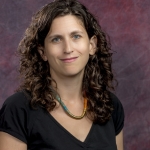
Ms. Emily Peck
The Many Ways to Connect Arts & Business (from The pARTnership Movement)
Posted by Mar 28, 2013

Ms. Emily Peck
 Emily Peck
Emily Peck
Last week, I left snowy New York City to spend some time in sunny Ft. Lauderdale at the invitation of the Broward Cultural Division to talk with arts organizations about the many ways they can partner with local businesses.
We discussed how to build a successful and meaningful partnership by thinking of the needs of business first, and how to look beyond the usual suspects when thinking about potential business partners.
We were joined by local business leaders from Florida Power and Light and Merrimac Ventures who spoke about how partnering with the arts helped their business engage new customers, reach new audiences, and enhance the quality of life for their communities. For more tips on creating partnerships check out our Building pARTnerships on Your Own toolkit.
This type of training session is just one way you can use the resources of The pARTnership Movement in your community. Here are some other ideas:
- Tell your story: Promote great arts and business partnerships on twitter (#artsandbiz), Facebook, and YouTube. Don't forget to let us know, too!
- Give a presentation at your local chamber of commerce about how the arts can help local businesses. See how it worked in Montgomery County, MD!
Read More














